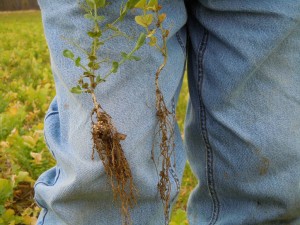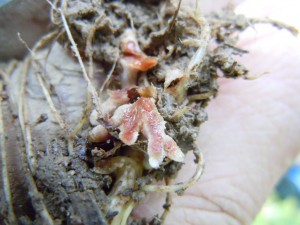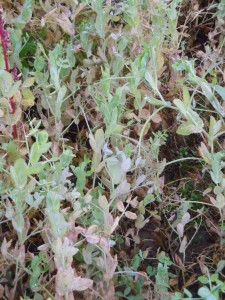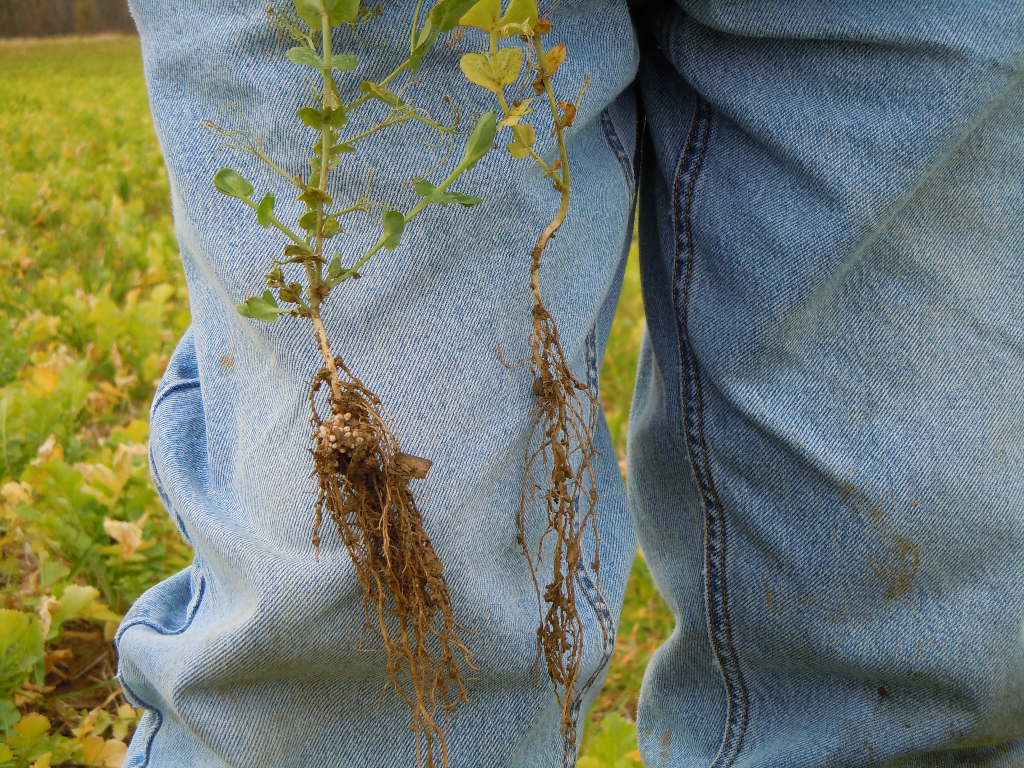Several farmers have asked me why they need to spend an “extra” 4-6 cents per pound to inoculate the legume seed they are planting for producing nitrogen with their cover crops. I get asked this especially about Austrian Winter Peas and Cowpea.
However, if you are planting Crimson Clover, Berseem Clover, Kura Clover, Alsike, Hairy Vetch, Sunn Hemp, or Medium Red Clover it’s just as important inoculate! Why? I’ll list a few reasons below:
- Legumes are planted as cover crops most specifically to produce nitrogen.
- Legume seed is relatively expensive; if it does NOT produce nitrogen, then it is exceptionally expensive.
- The inoculant is a species specific bacteria that allows that plant to fix nitrogen. If there are not enough bacteria there is limited nitrogen production from the legume plants.
- A healthy legume cover crop can produce nearly 200 units of nitrogen
- Even if you have produced a similar crop in your field within a two year time period, it still pays to inoculate each year since many of the bacteria prove to be “weak” and unable to perform like a healthy and vigorous bacteria.
- If inoculating Peas or Cowpea you will need to do a “seedbox” treatment. There are not yet inoculants that can be pre-applied that will allow you to have healthy bacteria. Therefore, most inoculant companies suggest putting the inoculant on within hours of putting the seed in the ground.
Be sure to get very good coverage on all of the seeds.
Do not hurry. Each seed needs coverage to actually be inoculated. I know that sounds silly, but I have seen many fields and plots where only some of the pea or vetch plants were performing well. The ones that looked poor had no nodules.
Many companies sell pre-inoculated clover seed. If yours does not, then either find another supplier or purchase the correct inoculant from your current seed supplier. Do not waste a great opportunity to produce as much nitrogen as possible. It is less expensive to produce nitrogen than it is to purchase it.


